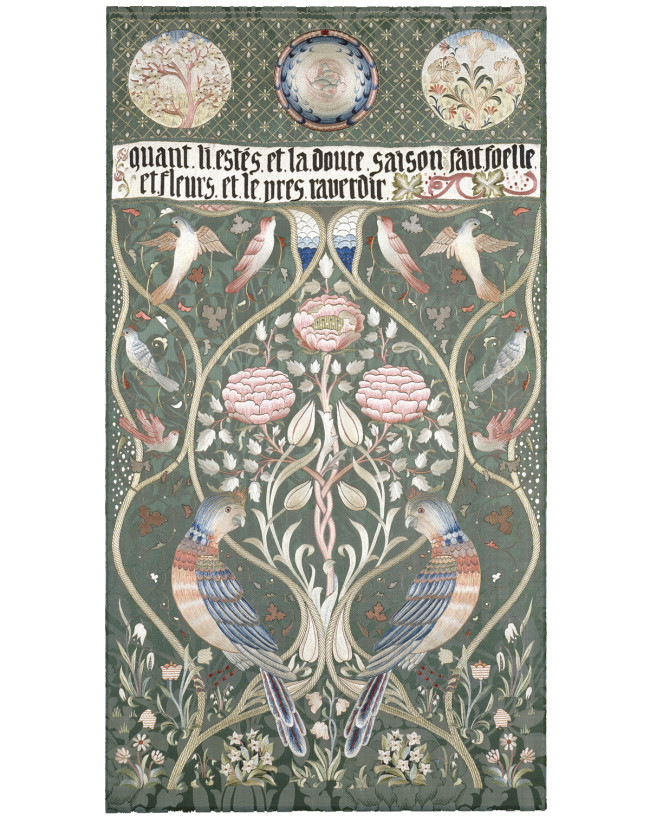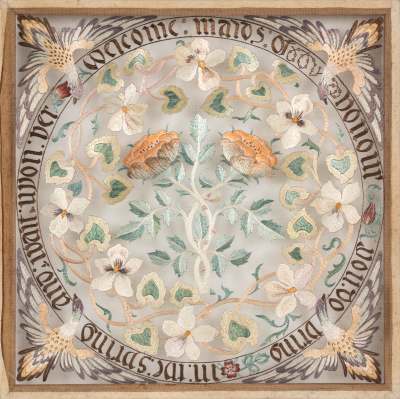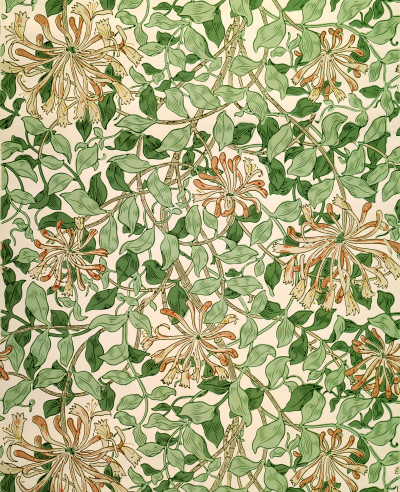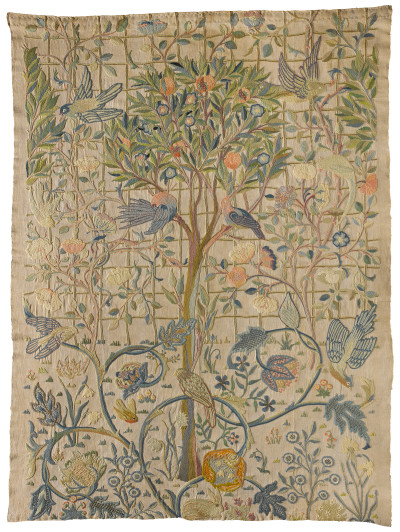Feminist, socialist, embroiderer: the untold story of May Morris
Feminist, socialist, embroiderer: the untold story of May Morris
By Jan Marsh
Published 20 September 2017
The pioneering artist and designer has been overshadowed by her father for over a century, but a new show at William Morris Gallery is stitching together the threads of her own remarkable career.
-
From the Autumn 2017 issue of RA Magazine, issued quarterly to Friends of the RA.
-
-
May Morris? Wasn’t she related to William Morris, the famous English textile designer, writer and socialist? Wife – or daughter? – who edited his poems and copied his designs?
If that is all you know about May Morris, you are not alone. Her life and work have been so eclipsed by her famous father that her own achievements have been invisible for over a century.
Now the William Morris Gallery in the London is staging a retrospective exhibition to showcase her work. Those, like me, who have championed May Morris over the years are thrilled to present her to the public at long last. Born in 1862, just when her father launched the business that would become Morris & Co, with its trademarked fabrics, wallpapers and stained glass, May followed her mother Jane, the renowned Pre-Raphaelite model, into the fine craft of embroidery.
This period saw a reaction against the machine age, with a revalorisation of traditionally hand-crafted pieces made by designer-makers. The new aesthetic, soon named the Arts & Crafts movement, favoured stylistic simplicity combined with high quality, in designs inspired by pre-industrial examples. May was part of the first generation to study fine crafts in art schools like the National Art Training School in South Kensington, which later evolved into the Royal College of Art. Here, her specialisms were textiles and embroidery – notably Opus Anglicanum, a form of fine, rich needlework that developed in medieval England, used primarily for church vestments. At the age of 23, she took over management of the Morris & Co embroidery department, supervising the production of altar cloths, portières, fire screens and bed covers commissioned by clients, all in the Morris house style. Some of her own designs, such as Honeysuckle (c.1883) and Horn Poppy (1885), joined the firm’s stock of printed textiles and papers, and were sometimes misattributed as her father’s work. Having often taken inspiration from him, for example from the lines in his poems describing the horn poppy as “thin and bright”, May would possibly have been pleased with this error, although she later made a point of correcting it.

-
-
It was the standard denigration of women’s work as essentially second- or third-rate that kept her works from critical and public attention.
Jan Marsh
-
A feminist and a socialist, May was dismayed by the lack of support for women practitioners (membership of the Art Workers’ Guild was open to men only at the time, and there were no women members of the Royal Academy of Arts between 1819 and 1922). In 1907 May founded the Women’s Guild of Arts. Her aim was “to keep to the highest level the arts by which and for which we live” and to create a mutually sustaining “atmosphere of camaraderie” through meetings and exhibitions.
As a designer-maker, May Morris also regularly took part in Arts & Crafts exhibitions from 1888 onwards. Here her works were either unique or limited iterations with variations in design and colour. Many embroideries, such as Fruit Garden, also known as The Orchard (c.1890), she executed herself or with friends, including portières such as those from Melsetter in Orkney, now in the National Museum of Scotland.
Rather than pattern repeats, the designs are organic, flowing forms, based on stylised flowers and foliage exuberantly rising or curling, with silk-winged birds among the leaves, and gothic-script quotations from ancient or modern verse. The circle of rose-and-heartsease in the Maids of Honour design (1890s) was one of May’s most popular pieces. In the frieze June (c.1909–10) 26 field and hedgerow flowers from around Kelmscott in Oxfordshire, where May made her home, are scattered beneath the five stanzas and four slender trees in the design.
-

Embroidered wall hanging featuring May Morris’s Maids of Honour design, c.1890s

Honeysuckle wallpaper designed by May Morris, c.1883

Embroidery design by May Morris, worked by May Morris and Theodosia Middlemore for Melsetter House, Orkney, c.1900

May Morris Valentine to George Bernard Shaw, 1886
-
Why have these examples of fine craft been so overlooked? Partly it’s because they were made for domestic use, not museum display. Textile works are also inherently fragile, and often don’t survive changes of ownership and use. Despite her position within the Arts & Crafts movement, May Morris never received the same acclaim as her father, and she fell into even deeper disregard with the advent of modernism in art and design. Above all, however, it was the standard denigration of women’s work as essentially second- or third-rate that kept her works from critical and public attention. Despite the pioneering work of textile historian Linda Parry, recognition has been slow to return. This autumn’s exhibition, May Morris: Art & Life, and the thoughtfully researched new publication that accompanies the show, should further enhance Morris’s standing.
As well as designs and fabrics, the exhibition and book also include examples of May’s watercolours and jewellery, and contain many hitherto unseen items, such as a delightfully witty Valentine she sent to playwright George Bernard Shaw, who later claimed to have shared a “mystic betrothal” with May. As she correctly responded, he among others had always failed to appreciate what a remarkable woman she was.
Reappraisal is long overdue.
-
May Morris: Art & Life, William Morris Gallery, London, 7 October – 28 January 2018
The accompanying book May Morris: Arts & Crafts Designer is published by Thames & Hudson, RRP £24.95.**
-
-
Enjoyed this article?
Become a Friend to receive RA Magazine
As well as free entry to all of our exhibitions, Friends of the RA enjoy one of Britain’s most respected art magazines, delivered directly to your door.
Why not join the club?

-









